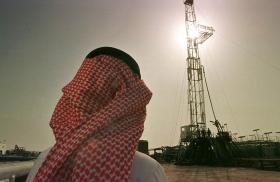
Assessing Militia Threats to Coalition Aircraft

Such threats are almost certainly information operations intended to demonstrate resolve and restrict coalition freedom of movement, not precursors to real attacks that could draw heavy U.S. retaliation.
Propaganda and information operation efforts by Iraqi muqawama (resistance) groups have turned to threatening coalition aircraft in recent days. In the aftermath of the June 27 U.S. strike on targets in Iraq and Syria, a series of threats against air assets were posted on Twitter and Telegram. The first came in the hours following the airstrike: a statement allegedly from Kataib Sayyid al-Shuhada, a group targeted in the strike. It read, "From now on, we will go to open war with the American occupation, the first stage of which is to target their hostile aircraft in the skies of our beloved Iraq."
The Saraya Awliya al-Dam (SAD) facade group (previously known for claiming attacks in northern Iraq) also produced a statement addressed to other muqawama factions in Iraq: “You have [the right to attack] their occupation bases and convoys, and we have their aviation. We will roast their soldiers in the air. The first occupation aircraft will fall within Erbil and its borders.”
On June 2, SAD produced a follow-up series of statements:
- "The presence of the American occupation’s aircraft in the skies of our beloved Iraq decreased more than 50% following our last announcement."
- "The Black Hawk and Chinook helicopters were out of service for the last 72 hours due to their inability to maneuver and avoid our new types of weapons."
- "The Apache helicopters were forced to change course and fly at high altitudes, which has made reliance on them costly and limited."
- "The occupying rats resorted to dispensing with the NG1 [sic] drones for reconnaissance, the Black Hawk for transporting personnel, and the Chinook for cargo transportation, and replaced them with the RG4 [sic] and NG9 [sic] combat drones in a desperate attempt to compensate for their lack of air presence."
- "The occupation may be forced to resort to ground convoys to compensate for its lack of logistical support to its bases in Iraq, so be on time, sons of Ali al-Karar. [Note: This was likely an exhortation to carry out more convoy attacks.] Further, we announce that we have made an exception for flights outside of the targeting zone, and for the following:
- "First: UH60 type 2 planes and King Air type 2 planes designated for transporting the staff of the United Nations mission.
- "Second: Two transport helicopters (a Chinook and a Black Hawk) belonging to the Sally Port Company, in their passage from Baghdad Airport to Balad Air Base to support the Iraqi Air Force, as this serves the Iraqi Army’s Iraqi F-16 planes.
- "Third: Two Black Hawk helicopters used to transport diplomats from the airport to the U.S. embassy and back."
Even before the U.S. strike, the muqawama had expressed interest in threatening coalition air assets. On May 24, for example, Sabereen News threatened to down U.S. aircraft, using the hashtag “#Afghanen_style” in its warning (Figure 1). This term has become a buzzword for Qais al-Khazali and his group Asaib Ahl al-Haq (AAH): in a speech delivered May 7, he noted, “If the Americans withdrew from Afghanistan with the force of Afghan will, let them know Iraqis are more zealous about their country. So if they tasted Afghan style in resistance, they must not forget the Iraqi style.” Sabereen News is affiliated with AAH; SAD is closely linked to Sabereen and often operates in conjunction with it.
These stated threats to aviation are almost certainly designed as information operations intended to restrict coalition freedom of movement. They come at a time when the muqawama are eager to appear as if they are resisting the coalition even as they are unwilling to escalate too far (for example, by killing large numbers of Americans). This restraint comes from a range of sources: muqawama leaders do not want to jeopardize their chances in upcoming elections, and their patrons in Iran seem unwilling to accept surprises in Iraq while nuclear talks are ongoing. But the militias also feel compelled to give the appearance of acting due to pressure from their support base.
Threatening coalition aircraft is a great way for militias to have their cake and eat it too. Such threats sound serious and are sure to impress supporters, but they do not have to be backed up with attacks or other actions in order for militias to claim they had an effect. Hence SAD’s statement emphasizing the (alleged) financial and logistical strain placed on the coalition, while playing up the muqawama’s supposed respect for Iraq’s interests and international law (another favored info-op topic for them).
This new line of information operation seems to mirror its ground-based equivalent, the “convoy strategy," which is likewise designed to make muqawama militias appear to be resisting by claiming to make coalition operations more costly and restricting freedom of movement—while, again, avoiding serious U.S. retaliation by not killing coalition personnel. These info-op campaigns are an important part of overall militia strategy because they help create the appearance of militia strength while reassuring supporters.
This hollow resistance should be contrasted with the precise drone attacks certain groups have undertaken since March, which seem to have a slightly different rationale. Although mostly nonlethal like the convoy and anti-air lines of operation, the drone attacks demonstrate real capability and precision that could easily be turned lethal, or at the very least used to demonstrate the vulnerability of coalition surveillance assets and command posts.



